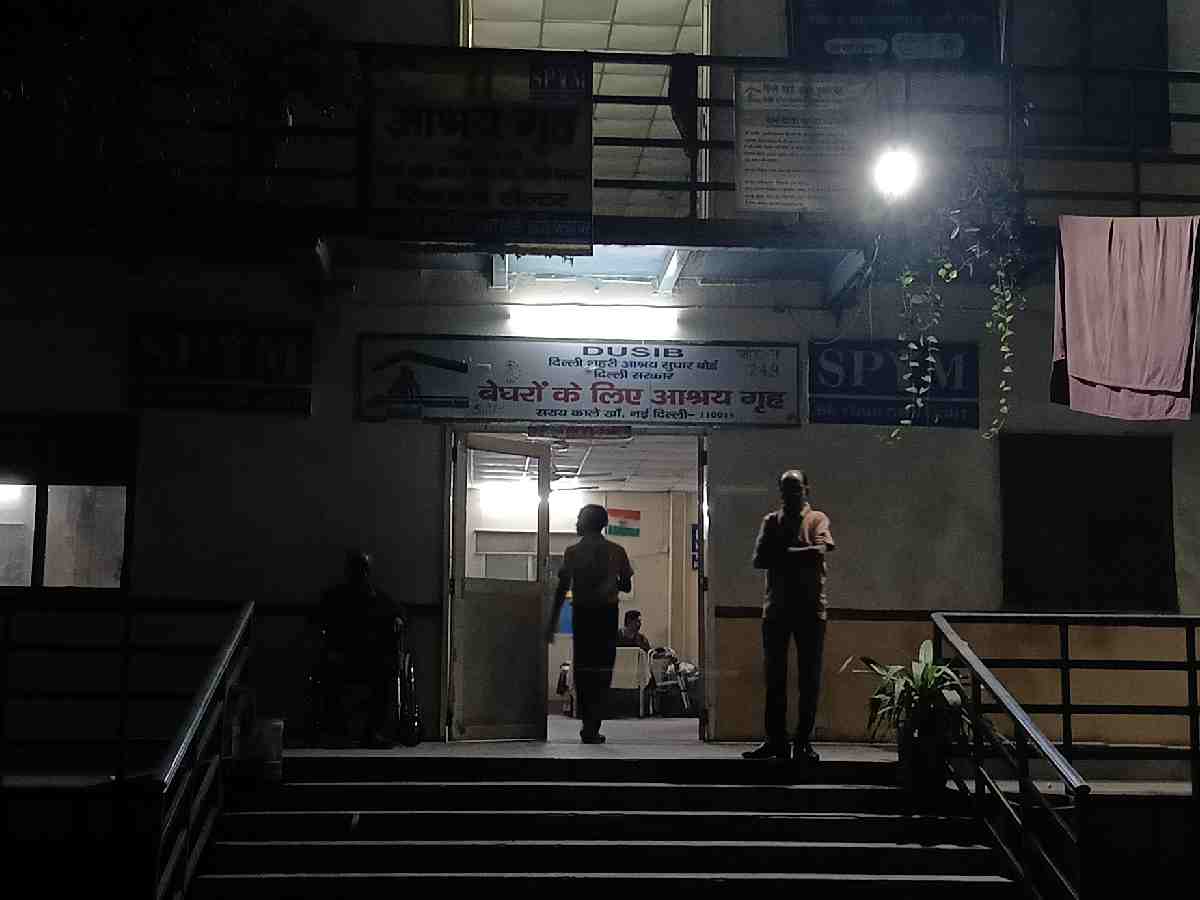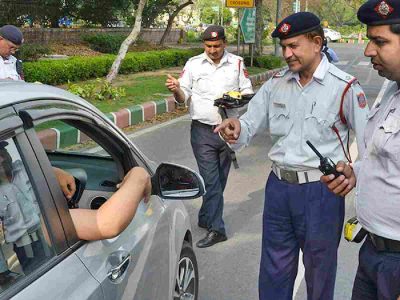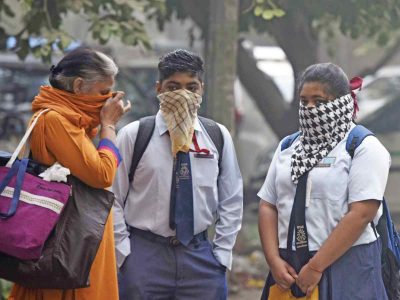Tucked away on the banks of the Yamuna River, at the far end of Delhi’s bustling Monastery Market, lies the Geeta Ghat night shelter—an unassuming yet vital facility that serves as one of only three operational recovery centres in the national capital. Home to approximately 80 individuals recovering from a range of illnesses, this shelter is a sanctuary for the marginalised and the infirm.
With the summer upon them, most residents toss from one side of the bed to the other as the afternoon heat strikes, only worsening their condition. They do not have the option to step outside, as their illnesses keep them confined. Although coolers are installed in some enclosures, they remain a luxury, and given the residents’ frailty, the heat becomes a secondary concern.
A structured haven amid scarcity
In a city where resources for the vulnerable are already scarce, Delhi has just one other recovery centre at Sarai Kale Khan, which too lacks sufficient capacity. The Geeta Ghat shelter stands out for its structured approach, housing five distinct wards: Orthopaedic, Tuberculosis (Intensive), Tuberculosis (Continuous), Multidrug-Resistant Tuberculosis, and a general ward.
The tuberculosis wards are fitted with translucent films on the windows to minimise the spread of disease, while the other wards benefit from open windows that allow sunlight to stream in, creating a healthier environment for recovery.
The shelter’s residents are a diverse group, predominantly migrants from states such as Uttar Pradesh, Haryana, Bihar, and Rajasthan, although many claim to have come from across India. Some are awaiting medical treatment, others are in the middle of post-treatment recovery, and a significant number have opted to remain in the general ward, with nowhere else to go.
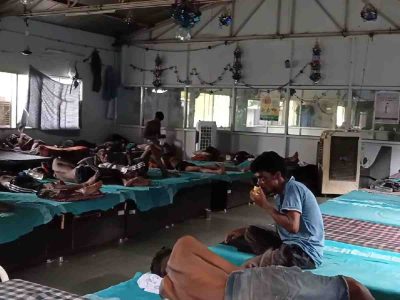
Managed by Sofia Educational and Welfare Society, an NGO, the shelter also receives crucial support from the Centre for Equity Studies (CES). The CES once independently operated the recovery centre when it was located along Yamuna-Pusta Road, but after those shelters were demolished, the Delhi government constructed the Geeta Ghat facility about a decade ago.
Battling illness and rising temperatures
Ankit, a resident from Mirzapur in Uttar Pradesh, arrived at the shelter just a week ago, battling intensive tuberculosis. His frail frame, with ribs protruding, tells the story of a man who has endured severe malnourishment and a long battle with illness. Diagnosed a year and a half ago after persistent coughing and drug addiction, Ankit moved to Delhi with his wife, who ensured his admission to Lok Nayak Hospital.
“They discharged me after two months, and for the past five days, I’ve been staying here,” he said. “The caretakers at the centre supply me with medicines and food three times a day. Suffice to say, I’m getting better. However, due to my illness, I cannot move because whenever I do it gets too strenuous for me. With just a fan and inside this steel establishment, it is getting difficult day by day. I know it will get worse in May, before it gets any better.”
Rajbir, a labourer from Araria in Bihar, has been a resident of the Orthopaedic ward for six months. Stricken with paralysis in his left leg for six years, he only began treatment a year ago. Recently discharged from medical care, he has regained limited mobility, able to walk from his bed to the shelter’s gate.
His story is one of profound loss and separation. Rajbir’s wife passed away two years ago, and his two sons, aged 13 and 10, are fending for themselves. “I miss them every day,” he said, his voice heavy with emotion.
“My elder son is in Hyderabad, working as a labourer. My younger son works at a school in our village where he also studies. I’m scared I won’t be able to work anymore.”
Rajbir is awaiting a mobile phone promised by the shelter’s caretakers, hoping to reconnect with his elder son through contacts in his village. He also highlighted the deteriorating condition of other residents.
“They cannot go out and they are fighting off worse sicknesses than I am. I will be discharged in only a couple of months. However, I am not too sure about the others. There are some who have been here for years, but the situation is such that with each summer, their condition deteriorates,” he said.
A slightly better alternative
At Sarai Kale Khan, the situation remains slightly better owing to its Reinforced Cement Concrete (RCC) structure. As a permanent building, it spares residents the glaring heat radiated by the tin shelters at porta cabins. According to residents, just a fan is usually enough.
However, space is limited. The two-storey building also houses a men’s shelter and has a total capacity of just 50 without any specialised enclosures, making it unsuitable for all patients.
Sanjay Yadav, a 50-year-old who has been residing at the shelter for the past two weeks, described how his recovery has been aided by the facility. “Only patients with minor ailments recover well here,” he explained.
Yadav recalled how he was struck in a road accident in Delhi and said that members of the NGO Jan Pahal had taken him to the hospital before arranging for his stay at the shelter during his recovery period.
“This shelter is suited for patients like me who are facing physical ailments,” he said, adding that those suffering from more serious diseases, such as tuberculosis, would not recover there due to the lack of resources.
“This recovery shelter is essential for people like me,” Yadav emphasised. “It gives us a place to heal when we have nowhere else to turn.”
A permanent home for some
Despite the challenges, Geeta Ghat remains a place of comfort for many who have nowhere else to go. For Sreenivasan Naidu, a 57-year-old bachelor from Chennai, the shelter has been home for the past six years.
Once a labourer travelling across India, Naidu’s life changed after he developed cataracts. After three surgeries in Delhi failed to restore his vision, doctors told him further operations were futile. “I can’t see anything more than a few metres away now, and obviously, I cannot work anymore,” he said.
Residing in the general ward since his recovery period ended, Naidu has struggled to find sustainable employment. “I was doing odd jobs here and there earlier, but it just became more difficult with each day,” he explained. “Before the disease, I was a labourer, but now I cannot do that either, so I just stay inside the shelter and go on walks nearby. They give me food and a place to stay, but I don’t have any source of income. It is easy to stay here. The heat is a bit overbearing but it’s better than sleeping outside under the sun,” he said.
Threats of eviction and financial strain
Earlier, the Delhi Development Authority (DDA) had marked the Geeta Ghat shelter as an encroachment, citing its beautification drive to reshape the Yamuna riverfront. However, the Supreme Court halted the demolition, recognising the plight of the shelter’s residents.
A senior official from the CES, speaking on condition of anonymity, recounted the shelter’s fraught history with the DDA’s efforts. He said they had filed a petition to halt the demolitions, and that the Supreme Court had put a stay on the demolition of Geeta Ghat, directing the DDA to identify or construct an alternative shelter for the residents.
Also Read: Water crisis hits everyone in Delhi, except the private players
“But this fight isn’t just for Geeta Ghat—it’s for all the shelters,” he said. “The moment these residents are evicted, they’ll have nowhere to go.”
However, the lack of fund disbursement from the Delhi Urban Shelter Improvement Board (DUSIB) has become another cause for concern among NGOs supporting the shelter.
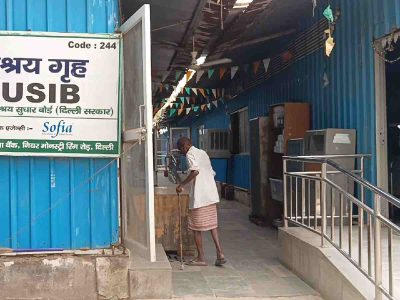
“We are running out of cash to sustain the shelter by ourselves. We are mostly functioning on the loans we have taken out but the DUSIB will have to come through now, then we could at least get a couple of coolers by ourselves. We do not have our salaries either, and today is the 11th month,” said Ravi Kant, supervisor at Sofia.

